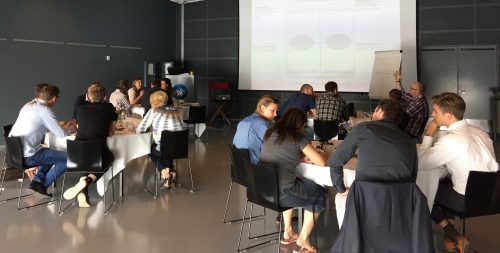
Quite a few years back now, the Center for Creative Leadership developed the 70:20:10 model for learning and development. The research behind the model shows that most of our learning (70%) stems from hands-on, on-the-job experiences. We mainly learn from what we do.
When we learn from others, it is typically in the form of coaching, mentoring and various forms of collaboration. This accounts for roughly 20% of our learning, and finally, the last 10% of our learning is based on courses, books, lectures etc., what we also call formal learning.
This then raises the question: Should we just forget about the formal part? Are courses and books just a waste of time?
If we look at the research on how high performers learn and develop, it becomes clear that there is a pattern.
High performers are typically quick to grasp the basics and when it comes to new learning, they often get this in the form of more formal structured courses, training or books. The 10% is their foundation. That is what they use to build their development on.
What makes them high performers is that the new knowledge inspires them and drives them to want to practice. They spend hours trying out their new learning. Through trial and error, self-testing and feedback, they gradually improve their capability.
They are also not shy to seek the support and help of colleagues. They may even take a coach for a period in order to make sure that they really get to master whatever the new skill is (Just look at any top performer in music, acting or sports and you will see exactly this pattern). They are not born like that, they work hard to get there.
It is their drive to improve that makes them high performers.
So back to the question about formal courses. Do we need them?
Yes, we do.
Because we need that basic input, that initial inspiration. But we must understand that if we do not reinforce the message and help set the scene for the additional 70% on the job learning and the 20% collaborative learning or coaching, then we have wasted our time and efforts.
That means that if you, as a manager, have had one of your team members on a course, you need to think about how you are going to support that person in developing and improving their skills, building on the foundational knowledge that they have acquired on the course.
Most of them are probably not what we would define as high performers, they are just great team members. And therefore, they do not have the drive or natural inclination to do this by themselves.
The knowing-doing gap
The first step in that process is to have a follow-up conversation with your team members when they return from the course. What have they learnt and most importantly, where do they see the knowing/doing gap? What is it that they now know, but that they are currently not doing?
How can you then, as this person’s manager, make sure that your team member gets to practice these new aspects? This takes us back to our famous GROW model.
If you have forgotten what that is about, check it out here.
You multiply the value of the course experience by at least 10 times if you help them actually implement what they are learning. But don’t forget, no feedback, no learning.
If you want to further maximise their learning, make sure that they team up with one or two others who also did the course and have them form an action learning triad or let them have the support of an experienced coach. That way you will also make sure you have covered the 20% that comes from collaboration and/or coaching.
In my experience, this is the way to create sustainable change. The key is not the learner as much as their immediate supervisor.
In this context, the immediate supervisor comes in one of two basic types: the ‘Multiplier’ and the ‘Diminisher’. Being one or the other makes all the difference, as I will explain in next week’s post.
This the tenth blog post in a series where Mike is exploring:
Building capacity is at the heart of the Service Profit Chain. If you are not familiar with the intricacies of is model, don’t forget to check out Mike’s online courses where you will find a lot of great tools, resources and knowledge on Leadership Development and The Service Profit Chain.

[…] know from the 70:20:10 model that most of our learning comes from what we do on the job. That is the […]